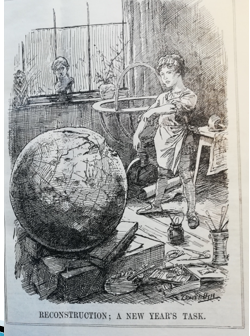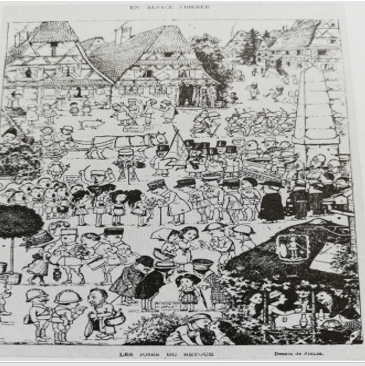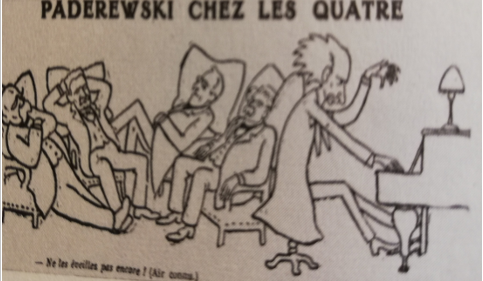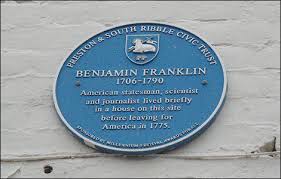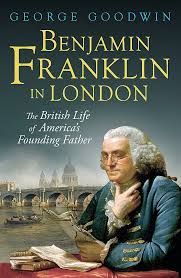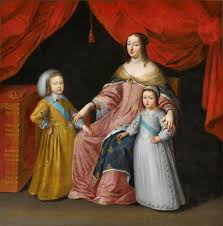3rd October 2022
George Shaw: Antiquarianism and faking Tudor furniture
On Monday 3rd October we met for our first lecture of the 2022/23 programme. We had postponed the meeting in September due to the death of Elizabeth II, so it was great to start the year with another fascinating lecture. We welcomed Dr Peter Lindfield who was discussing George Shaw.
Dr Lindfield began by introducing the very interesting character of George Shaw and his background. He was born in the parish of Saddleworth, on the border of Lancashire and Yorkshire, in 1810. He was the son of a cloth merchant so was very well acquainted with the textile industry. His teenage diaries (1829) record the various places he had been to and his interest in antiquarianism, especially that of ancient Britain and the Tudor period.
Dr Lindfield then introduced us to an image relating to the family of the Earls of Derby. ‘Sir Thomas Stanley’s Bed’, from the late 15th century, includes carvings of his coat of arms – the eagle and child – alongside the royal coat of arms. This is a controversial piece of furniture as the footboards that it contains are clearly Victorian. Much of the furniture that did exist was destroyed during the Civil War and consequently, a complete bed from the Tudor period simply does not exist.
Shaw did have access to furniture at Rochdale manor and simply copied it. This was the period of the ‘gothic revival’, which helped to develop the idea of recreating the past. Shaw was simply able to apply his learning and interests to develop such furniture.
Nevertheless, Shaw’s career was varied. He built a church in Saddleworth in the 1850s in the gothic style. This clearly illustrates his love of ancient architecture and design. At St Chads, Rochdale, Shaw refurbished the woodwork in this style, using treacle like varnish which was the current fashion of the 1840s.
The love of antiquity was not a new theme in the 1840s. Charles Locke Eastlake had made brand new furniture and passed it off as antique, some of which exists at Gawthorpe Hall in Lancashire. Such ‘antiques’ would be advertised in the Gentleman’s magazine, which was a monthly periodical. Dr Lindfield showed the audience 3 images of such sales from the 1840s. He went on to describe anything that had been original as “Frankenstein furniture” or “Cut and Shut”, whereby pieces had been taken from existing furniture and added to new. The key test of genuity is to ask, “did this exist at the time it is supposed to originate from?”
Dr Lindfield then returned us to the image of the Stanley Bed. Is it genuine? Shaw clearly was tapping into the love of antique and was establishing this as his business. Shaw found that he could ‘add on’ coats of arms to furniture, and his heraldic shields imitate the style of the 15th century.
Shaw found imitating this style natural. During his youth he had visited many ancient country houses, including Tabley Old Hall, making sketches and notes of what he found there. He was able to apply this knowledge to create something new, in an ancient style.
With this knowledge, Shaw began to produce and repair new ‘antique’ furniture. For example, Shaw claimed when he went to see the Radcliffe bed (1842) at Huddersfield, that he would be able to repair and with his knowledge of heraldry make it into the “finest bed”. He was therefore clearly making changes. Dr Lindfield focused on his use of coats of arms and describes the carving of animals as ‘naïve’, and demonstrate a range of inconsistencies. The bed was sold for some £62,000 and is now on display at Ordsall Hall, in Salford.
The George Shaw bed that can be seen at Ordsall Hall in Salford.
Shaw clearly saw an opportunity in the 1840s to sell ‘missing furniture’ to the aristocracy. As previously stated, much of Tudor and Jacobean furniture had been destroyed during the Civil War, including that of the Derby family. Shaw used his knowledge to create new materials and then contacted families of ancient lineage to sell them what he made, passing it off as original antique. These include the 4th Duke of Northumberland, the 2nd Earl of Bradford and the 13th Earl of Derby.
Our programme often refers to the Derby family of Lathom House, in Lancashire. Attenders of our programme may remember Dr Jonathan Spangler’s lecture last year, which included the story of Charlotte de la Tremoille, who married the 7th Earl of Derby, and was the defender of a siege led by Thomas Fairfax during the Civil War. It was because of this conflict that much of the Stanley furniture had been destroyed. Shaw here was trying to claim, in the 1840s, that he could get some of this furniture back. Of course, the 13th Earl was very interested.
None of the furniture that Shaw offered the Earl had a clear provenance, the originator was anonymous. The letters that he had sent the Earl reveal that he offered to sell him pew ends for £60. What Shaw was doing was to batch produce furniture and then added coats of arms. He often copied ancient motifs.
However, Dr Lindfield claims that by the late 1840s this had clearly backfired. It appears that he had been rumbled by the Duke of Northumberland, however there were no legal proceedings as this was not something that the Duke was willing to admit. It was at this point that Shaw began to focus on his building, including the Church at Saddleworth, and architectural work using cast iron.
Our next lecture will be on 7th November 2022, where Professor Catherine Fletcher will be delivering a lecture on “Guns and Gunpowder in Early Modern Europe.” We hope to see you there!







